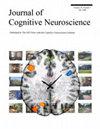额叶内侧皮层认知控制的分布表征。
IF 3
3区 医学
Q2 NEUROSCIENCES
引用次数: 0
摘要
在自然神经网络和人工神经网络中,模块化和分布式结构具有互补但又相互竞争的优势。前者允许分层表示,可以灵活地重组模块以解决新问题,而后者可以从较少约束的训练中受益,潜在地揭示富有成效的统计规律。在这里,我们在人类顺序行为的背景下研究这些竞争需求。首先,我们通过比较几个递归神经网络模型的性质来探索这种设置。我们发现,与不包含层次结构的“扁平”模型相比,明确的层次结构本身并不能提供关键的性能优势。然而,层次结构似乎促进了支持非常规行为和在计算压力下进行的行为的认知控制过程。其次,我们使用表征相似性分析将这些模型与fMRI数据进行比较。我们发现,将所谓的连接成本纳入成本函数的模型,该模型在神经网络的隐藏层中产生分层组织的表征结构梯度,最好地解释了先前研究中从人类参与者收集的fMRI数据[Holroyd, c.b, Ribas-Fernandes, j.j.f, Shahnazian, D, Silvetti, M., & Verguts, T.,人类中扣带皮层编码任务进度的分布式表征。中国科学院学报,2016,33(5):698 -6403,2018。结果表明,前扣带皮层编码顺序任务上下文的分布表征,沿背侧-尾侧的抽象梯度:与尾侧前扣带皮层编码的活动模式相比,吻侧前扣带皮层编码的是相对抽象和时间扩展的活动模式。这些结果为ACC在动机和认知控制中的作用提供了见解。本文章由计算机程序翻译,如有差异,请以英文原文为准。
Distributed Representations for Cognitive Control in Frontal Medial Cortex
In natural and artificial neural networks, modularity and distributed structure afford complementary but competing benefits. The former allows for hierarchical representations that can flexibly recombine modules to address novel problems, whereas the latter can benefit from less constrained training, potentially uncovering fruitful statistical regularities. Here, we investigate these competing demands in the context of human sequential behavior. First, we explore this setting by comparing the properties of several recurrent neural network models. We find that explicit hierarchical structure by itself fails to provide a critical performance advantage when compared with a “flat” model that does not incorporate hierarchical structure. However, hierarchy appears to facilitate cognitive control processes that support nonroutine behaviors and behaviors that are carried out under computational stress. Second, we compare these models against fMRI data using representational similarity analysis. We find that a model that incorporates so-called wiring costs in the cost function, which produces a hierarchically organized gradient of representational structure across the hidden layer of the neural network, best accounts for fMRI data collected from human participants in a previous study [Holroyd, C. B., Ribas-Fernandes, J. J. F., Shahnazian, D., Silvetti, M., & Verguts, T., Human midcingulate cortex encodes distributed representations of task progress. Proceedings of the National Academy of Sciences, U.S.A., 115, 6398–6403, 2018]. The results reveal that the ACC encodes distributed representations of sequential task context along a rostro-caudal gradient of abstraction: Rostral ACC encodes relatively abstract and temporally extended patterns of activity compared with those encoded by caudal ACC. These results provide insight into the role of ACC in motivation and cognitive control.
求助全文
通过发布文献求助,成功后即可免费获取论文全文。
去求助
来源期刊
CiteScore
5.30
自引率
3.10%
发文量
151
审稿时长
3-8 weeks
期刊介绍:
Journal of Cognitive Neuroscience investigates brain–behavior interaction and promotes lively interchange among the mind sciences.

 求助内容:
求助内容: 应助结果提醒方式:
应助结果提醒方式:


